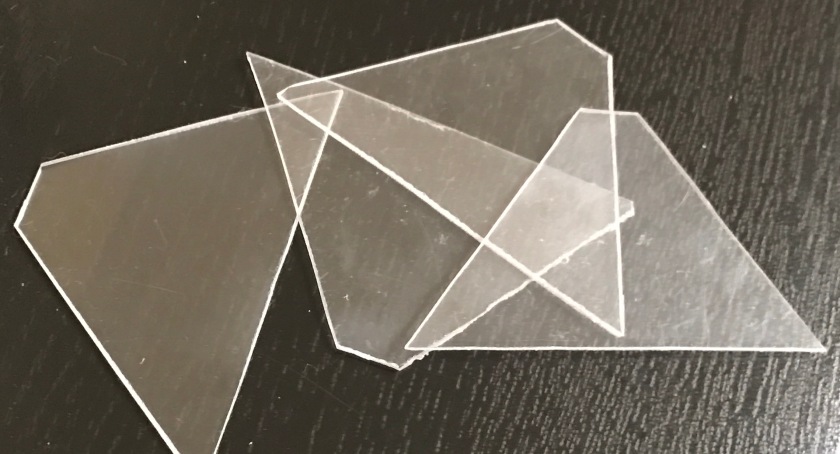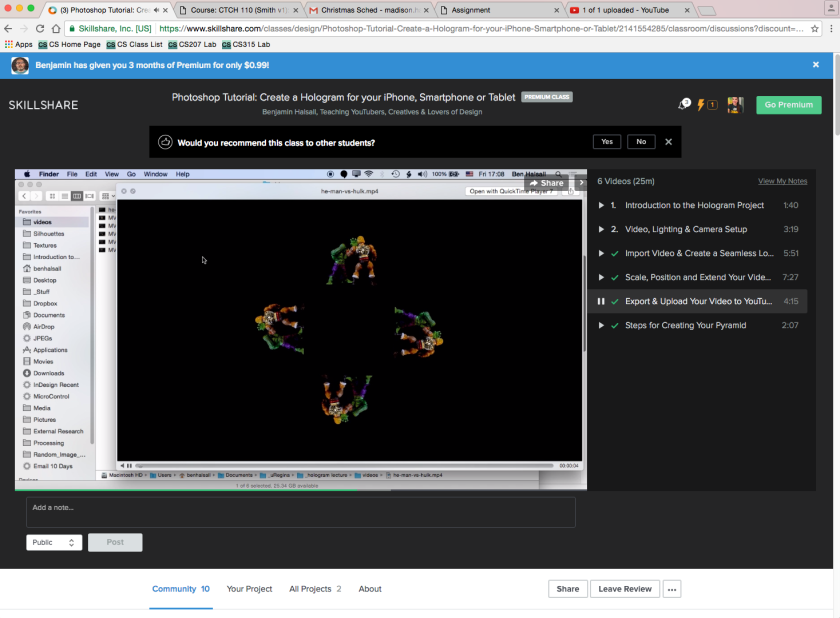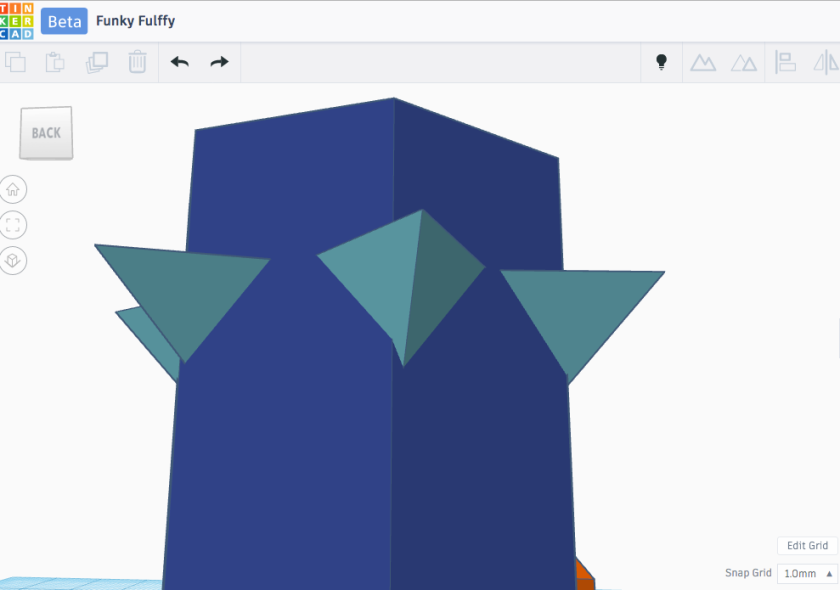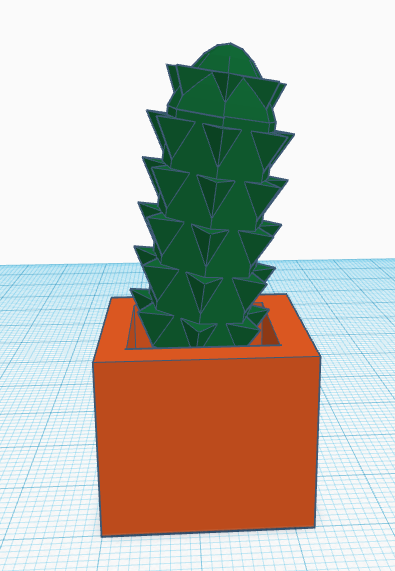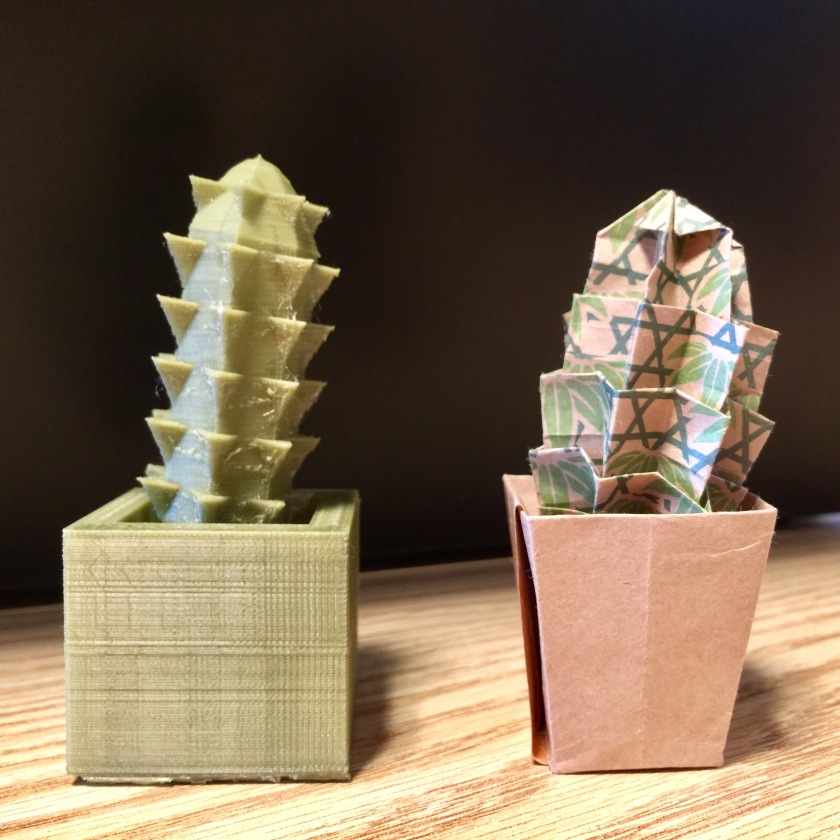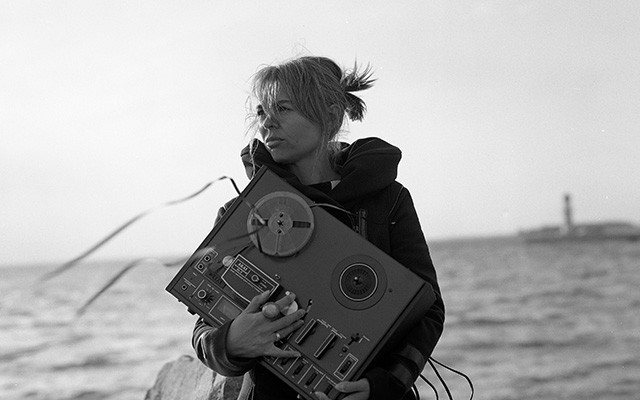
In CTCH110, we consider the marriage of art and technology; thus, we must consider the relationship between music and the application of atypical technological methods and tools. Our class was recently visited by composer Nicole Lizée, whose collage-like composition style accesses numerous musical genres, while drawing on other media and tools such as film, turntables, and other machines. With Lizée were quartet performers Leanne Zacharias, cello, Eric Platz, percussion, and Ben Reimer, percussion.
Early Life and Influences
Lizée has been experimenting with musical composition since her childhood. At age 15, she recorded her voice with boomboxes and cassettes, playing the sound back and recording it on another boombox, layering and synthesizing the tracks. She remembers, “There would be hiss and warping, and the first track would recede into the background with an odd timbre.” (source) This experimental theme and fascination with the varying sounds of technology has remained a common thread throughout her career.
Lizée’s father had a workshop with a plethora of technology, as well as a high turnover rate for the gadgets, as it was outmoded and reinvented through the years. These workshop sounds stuck with Lizée, and are a central theme of her works today.
A fascination with musical genre has also shaped her creations. Lizée’s obsession with the MTV music scene in her teenage years lived alongside her classical piano training. She recalls even at the time, she didn’t view the sounds of these genres as exclusive.
At Brandon University, Lizée completed a degree in classical piano performance. Her Masters was completed at McGill University in composition. Later in her education, she began incorporating turn tables into her compositions. She experimented with notation and genre as she created a new space for the turntable in concert music. Lizée stresses that this process includes lots of trial and error.
Glitch, Malfunction, and Obsolete Devices
As previously mentioned, Lizée was exposed to the rapidly developing technology of the 1970s and 1980s in her father’s workshop. He made a point to hold onto the various machines even though many of them didn’t work, or worked only for a short period of time before malfunctioned. “Cathode ray tubes, resistors, capacitors, and solid-state wiring” were among the tools that surrounded Lizée in her youth. (source) Later in life, the sounds were still with her and she started to consider their ability to be instruments and her ability to notate music for the new instruments. Lizée’s work with obsolete devices has shown her,“Things can fail in spectacular ways.” (source)
Lizée experimented with sound from objects such as oscillators and stylophones (a robot oscillator that reacts to light). She believes in re-purposing these machines, giving them new life and function: a place in orchestral music. According to Lizée, “anything that makes sound can be an instrument.” Unique challenges come with the addition of obsolete devices as instruments: musician control is decreased due to the irrationality and inconsistency of the glitching machines, and artists must also locate specific obsolete devices in order to play a piece. The payoff from the technology-art relationship is defined and enriched by these challenges.
Compositions and In-Class Performance
Lizée’s earlier compositions were with turntables, which she focused on for approximately 20 years. Her later pieces are a tribute to the film and orchestral industry and incorporate visual media with sound. With this additional layer of content, Lizée attempts to “suspend the scene,” and find what the director has hidden within a particular moment or scene.
The piece “Tarantino Études” for bass flute and glitch includes footage from four films. In each one, Lizée endeavors to zoom in or “damage the tape,” in order to find “ghosts” and dimensions in the scene the director didn’t intend as a focus, such as singular words in a monologue, or seemingly insignificant sounds produced by characters.
“Kubrick Études” for piano and glitch was commissioned by Megumi Masaki with the Canada Council for the Arts in 2013. The audio for the piece was recorded from various points in a room, which manipulated the pitch and tone subtly. Lizée carefully crafted this work to mirror the movie’s contour and framing.
The ensemble commented after the performance on the unique nature of performing Lizée’s works. Zacharias likened the inclusions of a visual film component to another member of the ensemble. This enables and encourages a relationship between artists and and technology. Lizée’s work has been an international success and “has been performed worldwide in venues including Carnegie Hall and Royal Albert Hall” (source).
The use of the click track in Lizée’s work allows both composer and performer to delve deeper into mixed-meter experimentalism, helps players keep time by acting as a conductor, and adds a sound evocative of glitch. This metronome-like tool paired with Lizée’s use of film leads Richard Simas, arts and literature freelance-writer, to suggest, “If there is a single notion that might capture the context for viewing her work, it is time: historical, metered, and anachronistic. She filters through icons of the past, makes selections, and recasts them in new surroundings. She skews rhythm and twists tempo in surprising fashions, inviting the listener to attend to the notions of forwards and backwards.” (source) None of this experimentation would be possible without the bridge and relationship Lizée forms between click-track and performer, film and performer, art and technology.
Sources:
https://www.musicworks.ca/featured-article/featured-article/nicole-liz%C3%A9e





